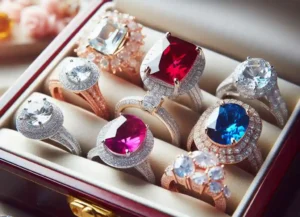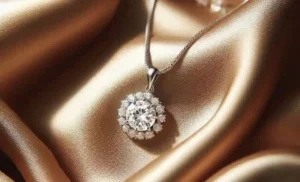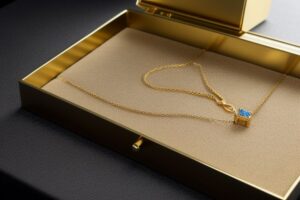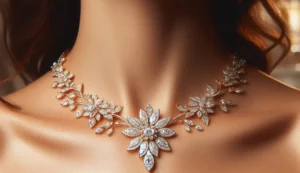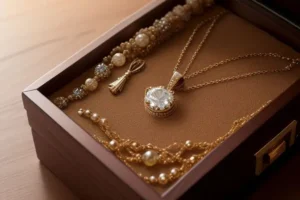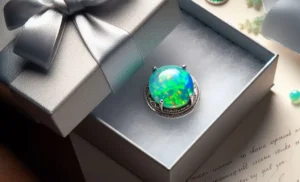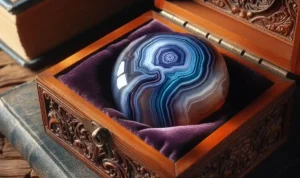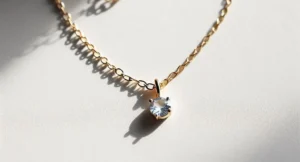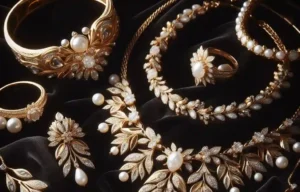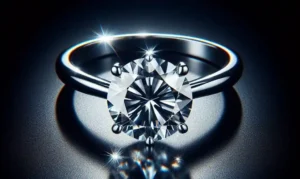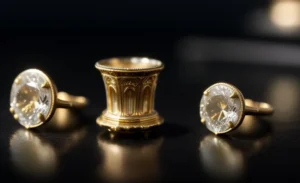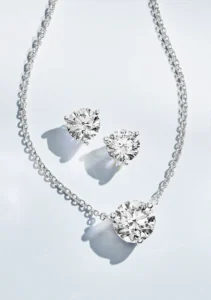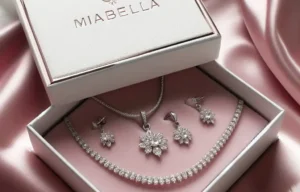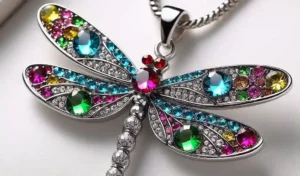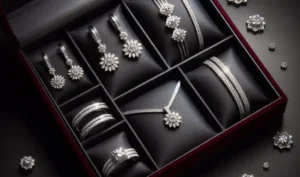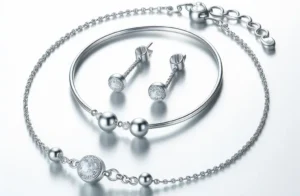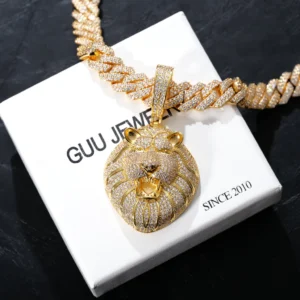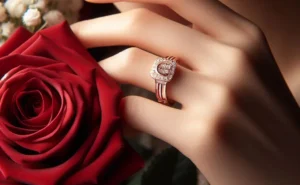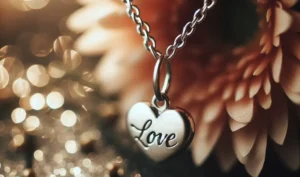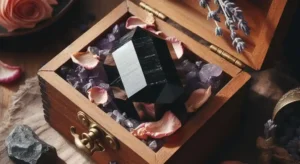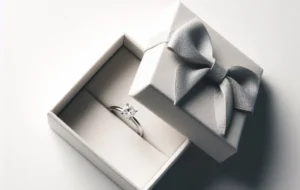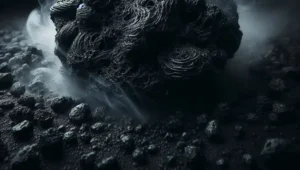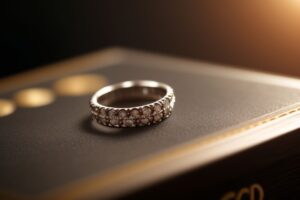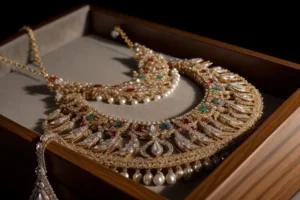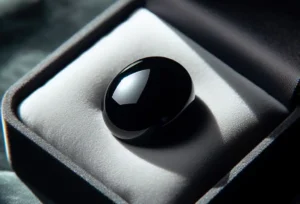How to Check a Diamond Serial Number: The mystique and allure of diamonds lie in their dazzling beauty and authenticity. Owning a genuine diamond is a significant investment and the symbol of everlasting love.
It’s essential to be confident in its authenticity, which can be achieved by verifying a diamond’s serial number.
This article will guide you through checking a diamond’s serial number to ensure you have a legitimate piece.
How Do You Check A Diamond Serial Number?
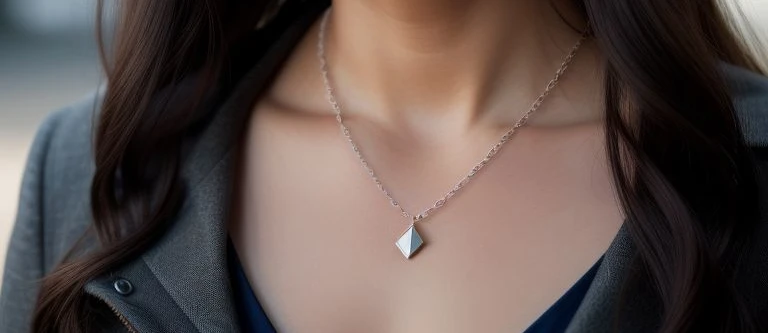
1. First, you need to locate the diamond’s serial number. This can usually be found inscribed on the girdle of the diamond.
2. Once the number is located, use tools such as a jeweler’s loupe, microscope, or a high-quality magnifying glass to clearly read the inscription.
3. Then, visit the website of an accredited gemological institute such as the Gemological Institute of America (GIA), the American Gem Society (AGS), or the International Gemological Institute (IGI).
4. Find their search function for diamond grading reports and enter your diamond’s serial number.
5. The report associated with the entered serial number will appear.
6. Match the details in the report to the physical characteristics of your diamond. This includes the cut, carat, color, and clarity of your diamond.
7. If the details match, you can be confident that your diamond is genuine.
8. If they do not match, or if the serial number is not found in the database, consider seeking professional help to evaluate the authenticity of your diamond.
Understanding What a Diamond Serial Number Is
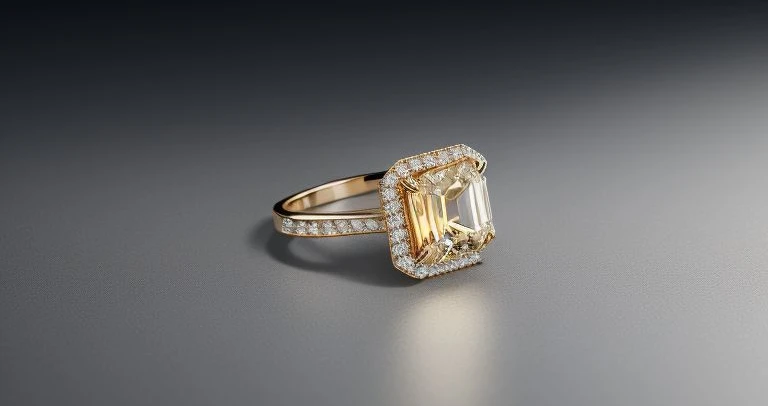
A diamond serial number, sometimes called a diamond grading report number, is a unique identifier. It’s created and assigned by gemological institutes during grading and then laser-inscribed onto the diamond’s girdle.
Each diamond’s grading report, which includes the specific attributes of the diamond, such as cut, carat, colour, and clarity, is linked to this unique number. The diamond serial number essentially serves as a diamond’s “fingerprint,” providing a way to trace the diamond back to its grading report.
This process aids in validating both the diamond’s attributes and authenticity, making the diamond serial number a crucial tool in protecting consumers from counterfeit or misrepresented diamonds.
It’s worth noting that the diamond serial number does not reflect the diamond’s value or price; rather, it is purely a mechanism for identification and verification.
Locating the Diamond Serial Number
Unearthing the diamond’s serial number is a task that requires close inspection. This identifying number is typically found etched on the girdle of the diamond, a narrow area that bridges the gap between the diamond’s topmost surface (table) and its bottom part (pavilion).
Due to the minuscule size of the inscription, it can be quite a challenge to spot it without some assistance. Tools like a jeweler’s loupe or a microscope are useful in deciphering these microscopic inscriptions, but even a high-quality magnifying glass can get the job done.
Be sure to have adequate lighting when searching for the serial number, as it can make the task significantly easier. Remember, patience is key when locating the diamond’s serial number, but rest assured that this effort is integral to verifying your diamond’s authenticity.
Knowing Where to Verify the Diamond Serial Number
There are specific online platforms where you can validate the serial number of your diamond, which are managed by accredited gemological institutes.
Some of the most trusted organizations that host such databases include the Gemological Institute of America (GIA), the American Gem Society (AGS), and the International Gemological Institute (IGI).
Each of these institutes offers a straightforward way to confirm your diamond’s credentials. Simply input your diamond’s serial number into their respective search functions, and you will be presented with the grading report for your specific diamond.
It’s important to remember that the details in this report should match the physical characteristics of your diamond, as this is a strong indicator of its authenticity. Therefore, knowing where to verify your diamond’s serial number is an essential step in ensuring you own a genuine gem.
Understanding the Importance of Verifying a Diamond Serial Number
The process of checking a diamond’s serial number is not just a means to establish its authenticity but is also crucial in verifying its quality.
By matching the unique identifier to the grading report, you can confirm that the gemstone you’ve purchased aligns with the specific characteristics outlined in the report, including its cut, carat, color, and clarity.
This step is essential to ensure that you’ve received what you’ve bargained for, and there’s no discrepancy between your diamond and its documentation. It serves as an invaluable guard against potential fraud, reducing the risk of falling prey to counterfeit or misrepresented diamonds.
Additionally, it brings a level of confidence and satisfaction in your investment, assuring you of the genuineness of your prized possession. Hence, the process of verifying a diamond’s serial number holds immense significance, promising security and certainty in your purchase.
In the event your diamond’s details do not match the grading report or the serial number doesn’t exist in the database, it’s advisable to seek professional evaluation to affirm the diamond’s legitimacy.
What to Do if Your Diamond Doesn’t Have a Serial Number
Not finding a serial number on your diamond is not an immediate cause for concern. Diamonds cut prior to the establishment of laser inscription standards may not bear a serial number. Likewise, the diamond may be too small to accommodate an inscription.
It’s important to remember that the absence of a serial number doesn’t automatically imply the diamond is counterfeit. To put your worries at ease, consider seeking a professional evaluation from a reliable gemologist. They can expertly scrutinize your gemstone and provide an informed opinion regarding its authenticity.
These experts can also generate a new grading report for your diamond if required, which can be immensely useful in confirming its specific characteristics such as cut, carat, color, and clarity.
It’s always better to have your diamond’s legitimacy professionally affirmed rather than make assumptions that could potentially undervalue your precious gemstone.
Protecting Your Investment Through Regular Checks
Safeguarding your diamond goes beyond the initial authenticity check via its serial number. Sustained vigilance through regular inspections is a wise practice to adopt. Repeated checks conducted by a proficient jeweler or gemologist will confirm the diamond’s continuing authenticity and assess its ongoing condition.
Even minute damages or changes in your diamond might affect its value, so having a professional look at it periodically is recommended. This proactive approach is commendable for your diamond’s upkeep and preservation.
In addition to this, maintaining the safety of your diamond’s grading report is equally significant. This report is an essential reference containing extensive details about your diamond’s attributes and characteristics. Treat this document with the utmost care, storing it securely yet easily accessible for future reference.
By staying committed to these routine checks and protecting your diamond’s grading report, you are essentially fortifying your investment against potential risks and losses. This periodic verification process helps in the detection of any anomalies early, thus allowing you to take the necessary steps promptly.
Keep in mind, these protective measures are not simply about financial security, they are also about safeguarding the sentimental value attached to your precious gem.
The Role of Diamond Serial Numbers in Diamond Tracking
Serial numbers on diamonds serve a crucial role beyond just verification of a gem’s authenticity and quality. They are an indispensable tool in the process of diamond tracking, which in turn helps promote ethical trading practices within the diamond industry.
Diamonds pass through multiple hands from the time they are unearthed in the mine until they reach the consumer. Their journey is often complex and can be clouded with unethical practices, including the trafficking of conflict diamonds.
These are diamonds mined in war zones, often sold to finance an insurgency or a warlord’s activities against a government. Tracking a diamond’s journey with the help of its serial number brings transparency and accountability into this often opaque process.
It enables tracing the diamond’s origins, its path through the supply chain, and ultimately to its final destination – the consumer. This ensures that the diamond you purchase does not contribute to any conflict or unethical practices.
Thus, the diamond’s serial number becomes a beacon of ethical trade in the industry, enhancing consumer trust and reinforcing responsible sourcing and trade practices.
It underlines the importance of always checking for a diamond’s serial number, not only for authenticity and quality verification but also to ensure your gemstone carries a clean, conflict-free history.


